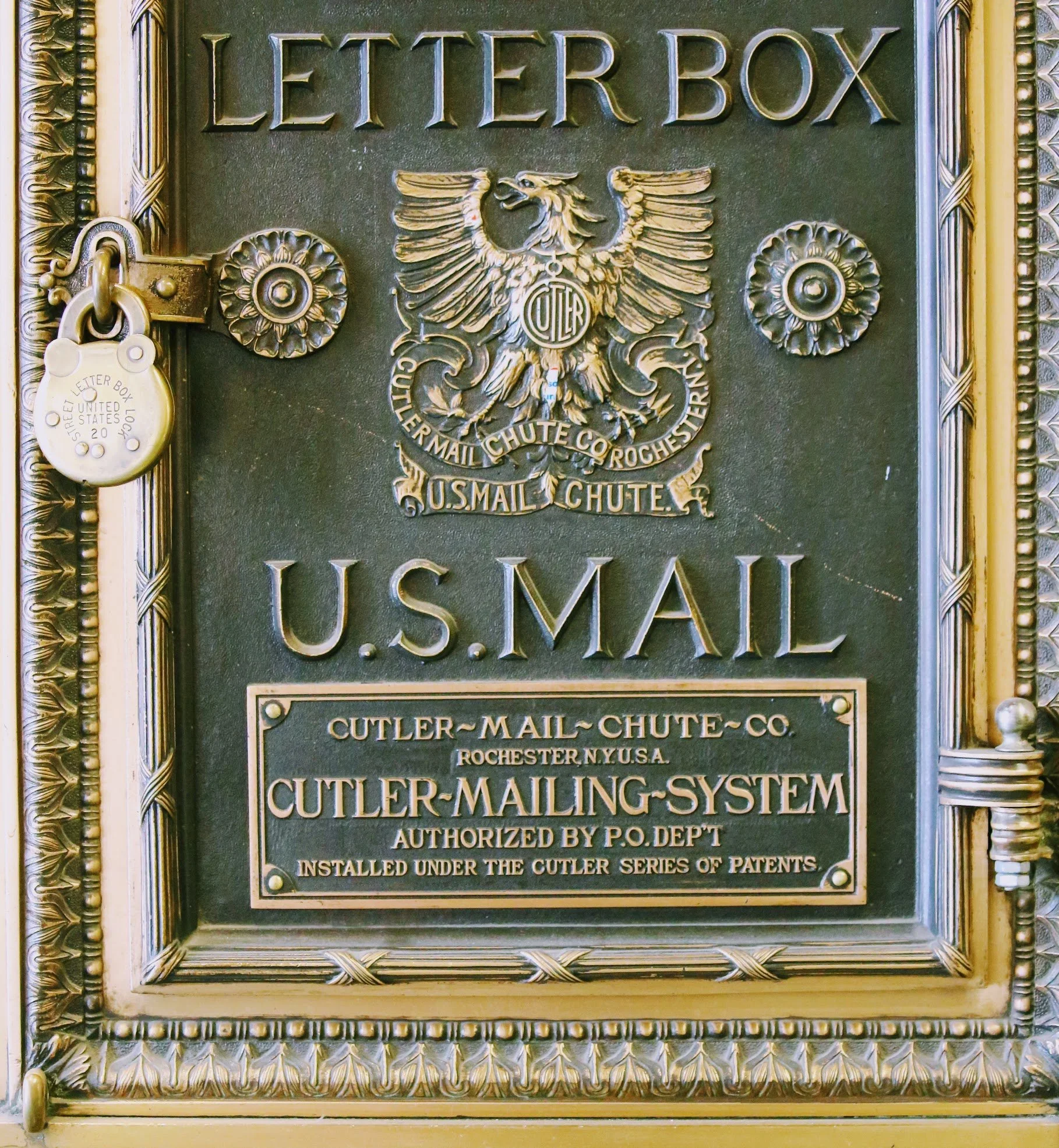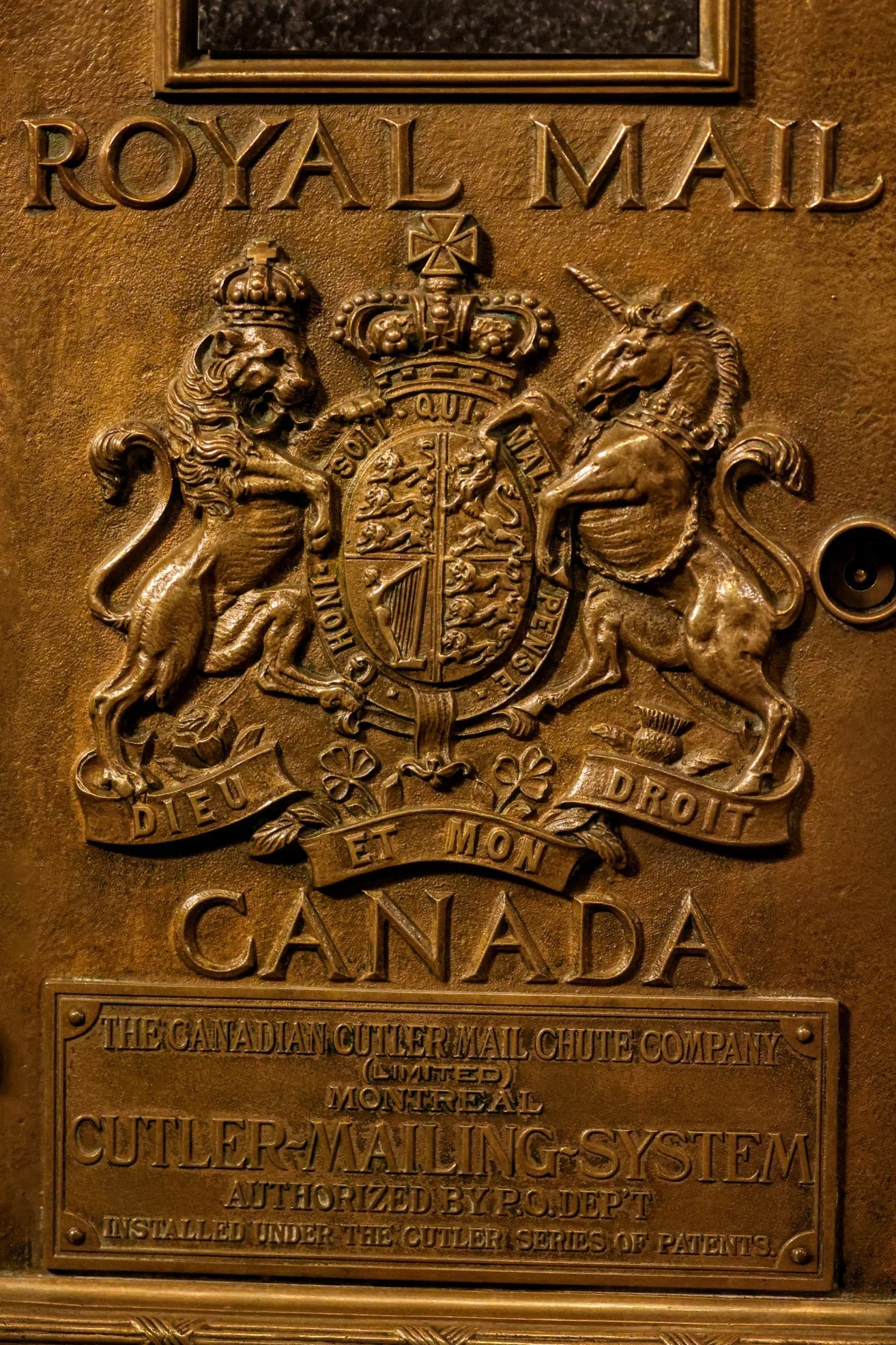The Cutler Mail Chute
When you see a Cutler mail chute, the first thought that might pop into mind is: "They don't make them like they used to!" As it turns out, there's an interesting story behind the Cutler Mail Chute Co. Their early 1883 patent ensured the company's success for many decades. Each box was functional but also a handcrafted beauty. They were custom designed to add to specific architectural elements of individual hotel lobbies and high rise office buildings. With a quick glance, you can usually tell which art movement the box was made. With superb ornamental detail, the Cutler company created works of art.
I've always been interested in philately, vintage mail boxes and the history of the postal service. While exploring older buildings in Houston, I was awed by the ornately detailed U.S. Mail boxes that were prominently featured in several lobbies. Each one was unique and one of a kind. I noted that they were all made by a single company: the Cutler Mail Chute Company. After doing some research later that evening, I discovered quite a fascinating history behind these beautifully detailed boxes.
The mail chute was invented by James Goold Cutler in Rochester, NY, in 1883 and was first installed at the Elwood building in the center of the city. It proved an instant success. Cutler received the patent for the mailing system the following year and went on to sell over 1,600 boxes over the next twenty years. Patent #284,951 stated that the box must be of metal, distinctly marked 'U.S. Letter Box' and that the bottom of the box was required to be outfitted with an elastic cushion to "prevent injury to the mail." Cutler designed the chute in a way that mail was rarely trapped or damaged.
As buildings rose in height, the chute system, typically consisting of a long, glass tube with slots on each floor, provided a convenient option for mailing letters and small packages. It benefitted both tenants and mail carriers. The chutes, along with the boxes attached to them, were installed in public office buildings, hotels, and apartment buildings all across American cities, with New York City leading the way. Once installed, Cutler's first-floor mailbox linked all the upper floors and allowed mail to be easily deposited from each floor. By the start of the 20th century, architects began to design buildings to accommodate for the design of the chutes.
Postal service officials appreciated the invention, as well. Here is an excerpt of a letter written by the Post-Master General to the City of Rochester as they tested early models:
"Gentlemen, it gives us pleasure to testify to the perfect operation of the U.S. Mail Chute placed in the Home Insurance Building and the Rialto Building in this city. The volume of mail in these two buildings is very great, and the chutes have been very severely tested. The device is an excellent one, of great value to the post-office as well as to the public, and should come into general use with as little delay as possible."
These intricately detailed, customized bronze beauties became a fixture in buildings for many decades. Through the Beaux Arts movement to Art Nouveau to Art Deco, Cutler’s mailboxes featured beautiful and ornate designs. Some of them were artfully designed in the same architectural style as the building, and enhanced the beauty of the lobby. The General Electric Building in New York City is one of the finest examples of this.
Some mail chutes are still operable today, but most have been sealed and hang in lobbies for aesthetics. If you really want to see Cutler boxes, visit New York City. Today there are approximately 900 in Manhattan, 350 in Chicago, and hundreds more in other cities. In 1997, the National Fire Protection Association banned the use of mail chutes in all new building construction. Cutler Mail Chutes serve as lasting examples of a bygone era, when the letter box functioned as an important aesthetic element in building design.
Sources:
'Art Deco Mailboxes' by Karen Greene and Lynne Lavelle
https://www.atlasobscura.com/articles/new-york-citys-mail-chutes-are-lovely-ingenious-and-almost-entirely-ignored





